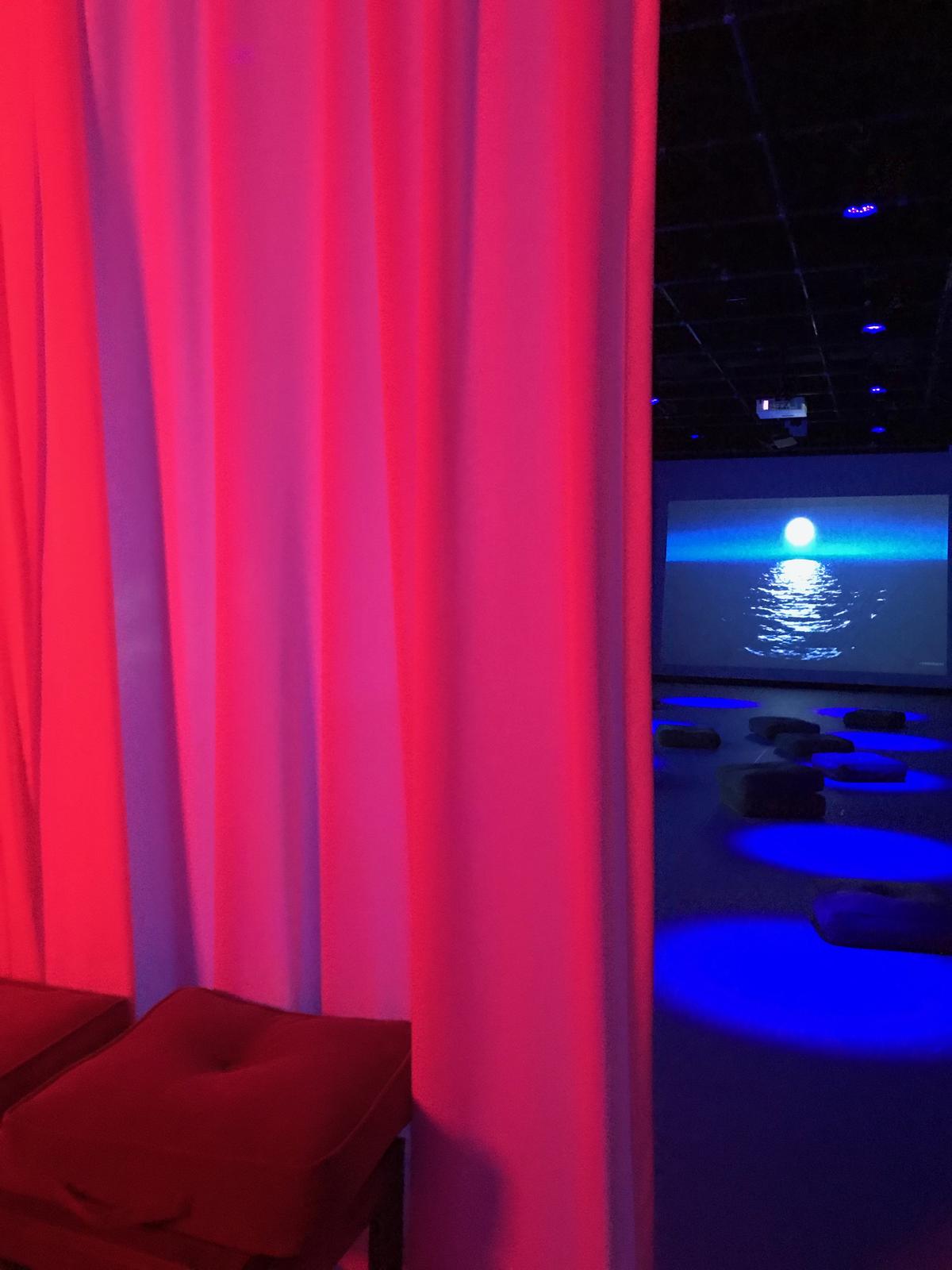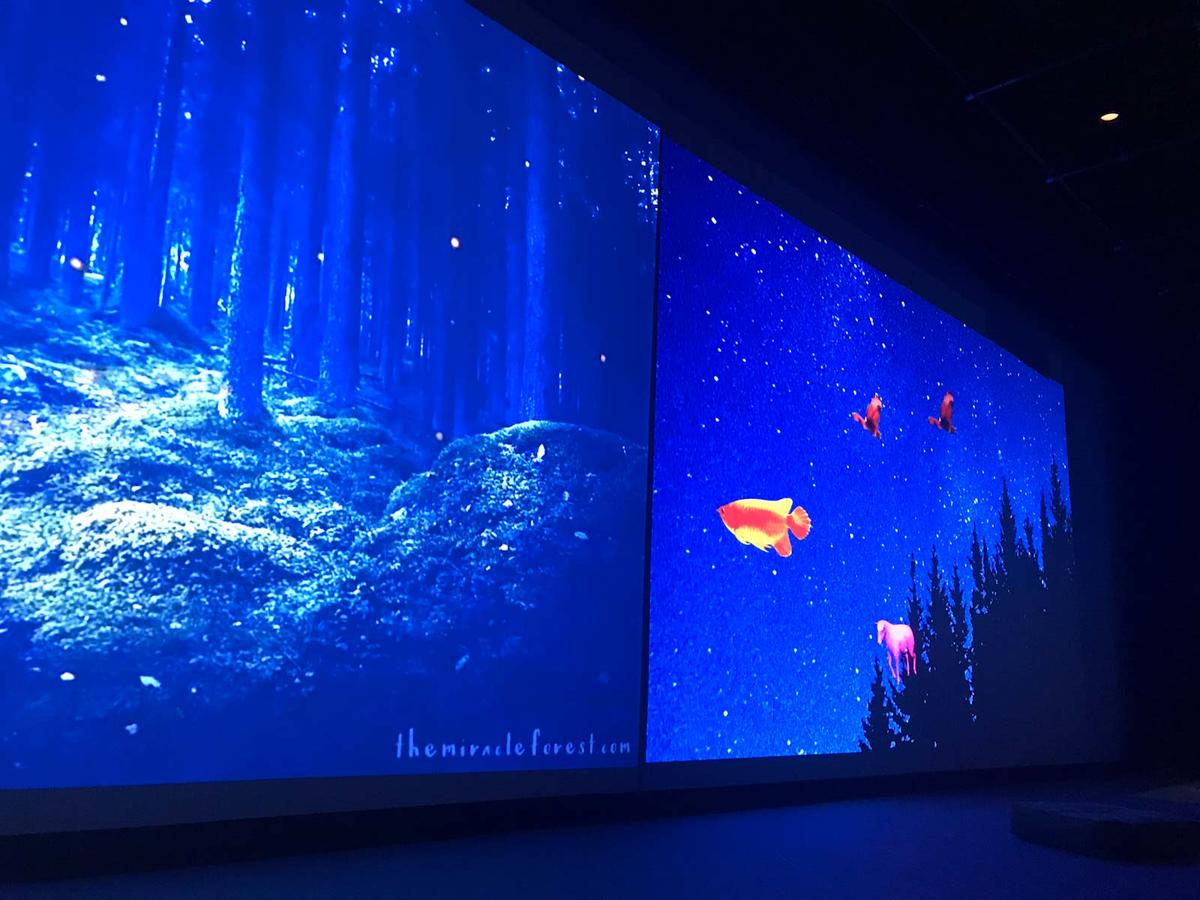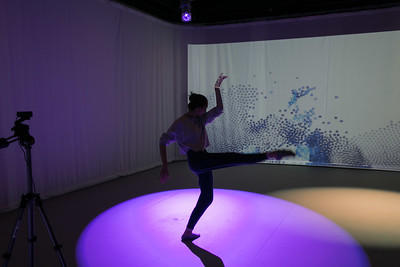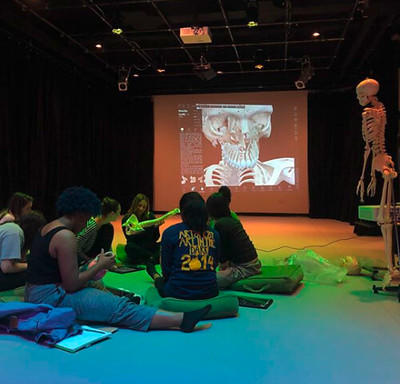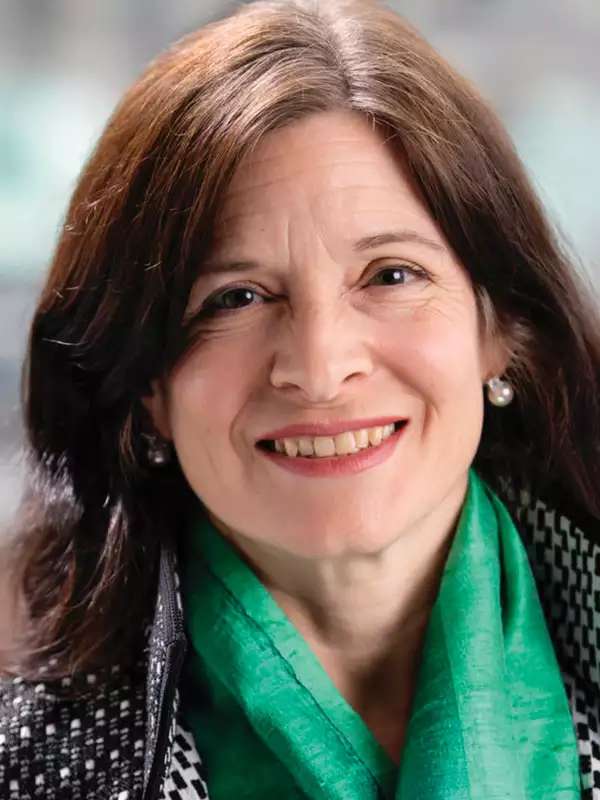[Lede image: From the four-minute film short The Honeys and Bears, directed by Veena Rao, about Harlem’s synchronized swimming team for seniors 55 and older.]
Moving Body - Moving Image 2020 Festival Trailer from Barnard Movement Lab on Vimeo.
On April 4, 2020, the Movement Lab hosts its second Moving Body–Moving Image Biennial Festival, which is free and open to the public and will explore “Aging & Othering” on screen and in society, via short films, video installations, and virtual discussions with filmmakers and guest speakers. Originally scheduled to take place on Barnard College’s campus, the festival was transformed into an online experience, for this weekend, as a result of the current COVID-19 health crisis.
“Even though the Movement Lab’s [web]site was not set up for live streaming, we were able to build a new one capable of Vimeo live streaming, courtesy of our Post-Baccalaureate Allison Costa ’19,” said Gabri Christa, assistant professor of professional practice in Barnard’s Department of Dance, who founded the festival in 2018 to give voice to social and social justice themes in the hybrid form of dance filmmaking known as ScreenDance. The inaugural festival explored the depiction of the “Moving Brown Body” in film and enjoyed a sold-out debut.
With support from the Dance Department and the Sloate Media Center, this weekend’s festival was produced by the Movement Lab and will open with an introduction by Christa at 12 p.m., followed by two 45-minute program blocks of film shorts and two interactive panel discussions. A video conversation about ageism will be facilitated by Karen Williams, an integrative wellness practitioner of “empowered aging.” Guest speakers also include writer, editor, and art consultant Susanna Sloat; filmmaker, director, and producer Anna Sang Park; and distinguished NYU faculty educator, film scholar, and author Sheril Antonio. Renowned dance scholar, author, and teacher Deborah Jowitt will participate in discussions and also perform a short dance solo.
Christa curates the festival and leads the Movement Lab with the Sloate Media Center’s studio manager, designer, and technologist Guy de Lancey. “It has taken quite a bit of research and has been an interesting, if steep, learning curve,” said de Lancey, of moving the festival online in such a short amount of time.
Housed in the lower level of the Milstein Center for Teaching and Learning, the Movement Lab is (under normal circumstances) open to anyone interested in the intersection between arts and technology and offers a modular space for movement research, exploration, production, collaboration, and interdisciplinary interaction. But with New York ordered “on pause,” with only essential businesses open and everyone practicing social distancing, the Movement Lab has closed its doors for the semester, and its film festival has moved online.
When campus life eventually resumes, Costa looks forward to welcoming the Barnard community back and encourages them to visit the Movement Lab “with a willingness to play and see where physically trying something out leads their thoughts and research.” As a recent Barnard graduate, Costa appreciates how a place like the Movement Lab can really benefit students. “I believe if the Movement Lab existed for the entirety of my time at Barnard, I would have been able to create more performances and independent projects that explore how technology interacts with and provides feedback for movement.”
Since its opening with the Milstein Center in fall 2018, the Lab has rolled out more offerings for Barnard students, who now have leading-edge resources at their disposal and can participate in an innovative space that integrates learning and experimentation with hands-on experiences. Filmmaking, performing arts, animation, lighting, sound design, music, fashion, photography, anatomy, virtual reality, engineering, and more — regardless of a student’s area of study, the Lab has resources to support their exploration.
Students can discover where they fit in during Open Lab, a time “to explore a question without the need to come up with a result or finished product,” Costa said. For those who want more of a gradual introduction to the space, the Movement Lab also offers events designed to be more commitment-free, including the Stillness Lab and Motion Release.
True to its name, the Stillness Lab offers a space to chill in an animated forest with animals and ocean waves nearby. Students can take a moment away from studies and city life to be quiet, not hunched over books under fluorescent library lights but relaxed in a cool, clean room with dim shifting lights and soft sounds of nature. Dreamy scenes are projected onto the walls, with the occasional fish, bird, or even pink sheep floating into view. The Stillness Lab, typically offered on Wednesdays, has such a relaxing atmosphere that the staff admits they’ve had to wake students more than a few times.
Students can also participate in Motion Release, the Movement Lab’s celebration of movement and dance. One Friday per month, the space transforms into Barnard’s own nightclub, complete with surround sound, good beats, interactive art, and everything in motion — especially people on the dance floor. Physical expression and energy release is an effective self-care practice for many students, including Isabella Pechaty ’23, who reported and co-wrote this story.
“Motion Release was really fun and reminded me of the cool dance clubs I love going to in my hometown,” said Pechaty, a Minnesota native. “Even though Barnard was miles away, I felt right at home with everyone on the Movement Lab’s dance floor and got back to my dorm with that exhausted-in-a-good-way feeling you get from letting yourself go and enjoy a great night out.”
For now, Pechaty is back home in the Midwest, having moved off campus, like so many of her fellow Barnard students, to await the day when campus life resumes. Until then, Christa and the Movement Lab continue their important work of exploring social equity in an arguably more equitable way: online. “This year’s focus on ‘Aging & Othering’ is made even more relevant as the epidemic puts older members of the global population at heightened risk,” Christa said.
Festival organizers invite everyone in the Barnard community and beyond to “attend” Saturday’s festival, which is free and open to the public online; viewers who want to participate in Zoom discussions with panelists should register here for access. The live portion of the festival ends at 5 p.m., with exclusive access to all 200 festival programs open until the following day, Sunday, April 5, at 12 p.m.
— reported/co-written by ISABELLA PECHATY ’23
